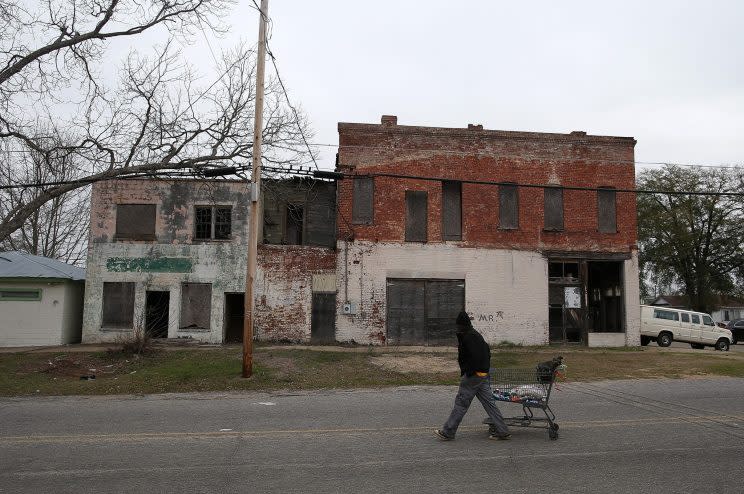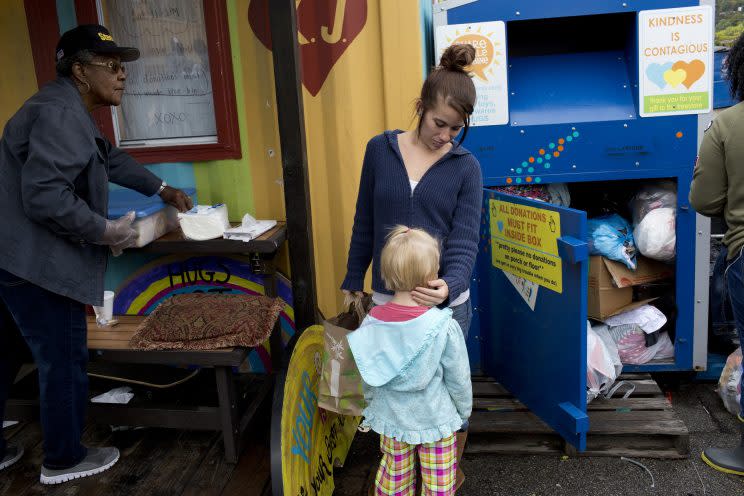Disconnected youth: Growing up jobless and rootless in rural America

President Trump’s election cast a spotlight on a frequently overlooked demographic, the white rural working class that voted for him in overwhelming numbers. Its alienation was aired in books and articles on unemployment, suicide rates and opioid addiction. But a new study says the iconic laid-off miner or factory worker is only the most visible part of the problem: His or her child may be at even greater risk for social dysfunction.
Measure of America (MOA) — a project at the nonprofit, nonpartisan Social Science Research Council — released a study on Wednesday showing that 20.3 percent of young adults (one in five) in rural areas are neither working nor in school. This “disconnection” rate is significantly higher than the average for urban counties, 14.2 percent, or for the United States in general, at 12.3 percent. For rural counties in the South, the disconnection rate is a staggering 24 percent — roughly double the national figure.
“One thing that came clearly from the election is that people in rural areas were feeling quite hopeless about the future. You know, they really felt left behind. They felt kind of cut out of progress and prosperity in a lot of ways,” MOA co-director Kristen Lewis told Yahoo News.
Lewis and her fellow co-director Sarah Burd-Sharps founded MOA in 2007 to promote fact-based public debate about well-being in the United States by focusing on three major issues: health, education, and standard of living. Their new report, “Promising Gains, Persistent Gaps: Youth Disconnection in America,” focuses on disconnected youth, whom they define as young people between 16 and 24 who are neither employed nor pursuing an education. (Measure of America also counts as disconnected parents who are raising children while one of them is working, but says this is a very small group of people.)
In an encouraging sign of improvement, the number of disconnected youth has fallen from its post-recession high of more than 5.8 million to 4.9 million. Between 2010 and 2015, Washington, D.C., and New Hampshire saw youth disconnection fall the most, and successful initiatives in Arizona helped to bring the figure there down by 30 percent.
Still, nearly 5 million young adults are deprived of the educational and employment opportunities necessary for fruitful, fulfilling lives. Class, race and ability are also factors: Youth from low-income backgrounds, and young people of color, or with disabilities, are more likely to be disconnected.

“In the U.S., we tend to rely really heavily on economic indicators like GDP or unemployment to talk about how people are doing. But we would argue that this is a really incomplete and even sometimes misleading picture,” Burd-Sharps said. “The reason we’re concerned with youth disconnection … is because it really stunts their well-being and scars them throughout their life, and it closes off many opportunities later and often causes a future of unrealized potential.”
The researchers say advocacy around youth disconnection has largely focused on low-income urban neighborhoods. This reflects a variety of factors, including costs, logistics and the prevalent view that disconnection and phenomena such as crime, drug abuse and leaving school are mostly urban phenomena. The opioid epidemic, however, has generated awareness of the plight facing rural communities.
Lewis said high schools in rural areas tend to offer fewer educational options — courses, career training, etc. — resulting in less engaging curricula. Sparsely populated areas have fewer schools to choose from and fewer businesses to apply to for jobs. This has resulted in young people becoming one of the greatest exports of rural areas. Many leave to pursue college or career opportunities and get a foothold in the economy.
“There was a real disconnect [with] the way more urban and suburban people feel about the future and the direction the country is going in,” Lewis said. “Kids in those areas are much more likely to find a way to be engaged in school, and they’re working more. It really does reflect a difference in the lived experience of these of rural areas versus metropolitan America.”
Fundamental economic changes have sapped rural areas of previously viable career choices. Factories have closed, farming has changed and big-box stores have decimated mom-and-pop shops.
“In the past, a young person with just a high school degree could probably find a way to make a living in a rural area. Whereas now, there aren’t many sort of jobs that pay a wage where a young person could really get a good start,” Lewis said.

Burd-Sharps pointed out that several factors strongly associated with disconnection are common in rural areas, including higher child poverty rates, lower rates of adults with college degrees and fewer school resources.
“That’s an area where there are solutions. I think the solution there is to invest in the school, so these kids are competitive,” she said.
Burd-Sharps and Lewis are hopeful that the problem of youth disconnection can be solved by addressing the obstacles young adults face that go beyond simply putting them in touch with an employer or encouraging school: poor physical health, psychological trauma, unsafe housing or finishing high school with low literary and numeracy skills. Counseling, career-mentoring and remedial learning are important elements, Burd-Sharps said.
“Another is that they need a long-term commitment,” she continued. “These one-off summer job programs are good. They’re a start, but they seldom bring long-term benefits. Kids need a longer-term ramp to reconnect.”
Lewis pointed out that it’s easier to prevent disconnection than to reengage someone who’s already left school and hasn’t been working for a long time. She emphasized the importance of early childhood education, restorative rather than harsh discipline and engaging high school classes that prepare teens for careers and provide a clear pathway to adulthood.
In 2013 alone, youth disconnection cost taxpayers more than $26 billion in imprisonment, Medicaid, Supplemental Security Income and public assistance, according to MOA.

MOA provides metrics concerning how well-being and opportunity are distributed in the United States, so policy makers and others working to empower ordinary Americans can track and determine the effectiveness of their efforts. The organization’s flagship work is the American Human Development Index, which incorporates various indicators, such as health and education, to compile well-being rankings for all 50 states, 436 congressional districts, county groups and other categories.
Burd-Sharps, who characterized MOA’s goal as trying to “breathe life into numbers,” said it first started tracking youth disconnection in 2012, because European countries such as Germany, Switzerland and Austria measure it closely — but not the United States.
“In part because they’ve really been tracking it in European countries, the rates there are way lower on average than in the United States,” she said. “They’ve developed a more youth-friendly economy to look at what things young people need to more successfully transition to their adulthood.”
Read more from Yahoo News:



